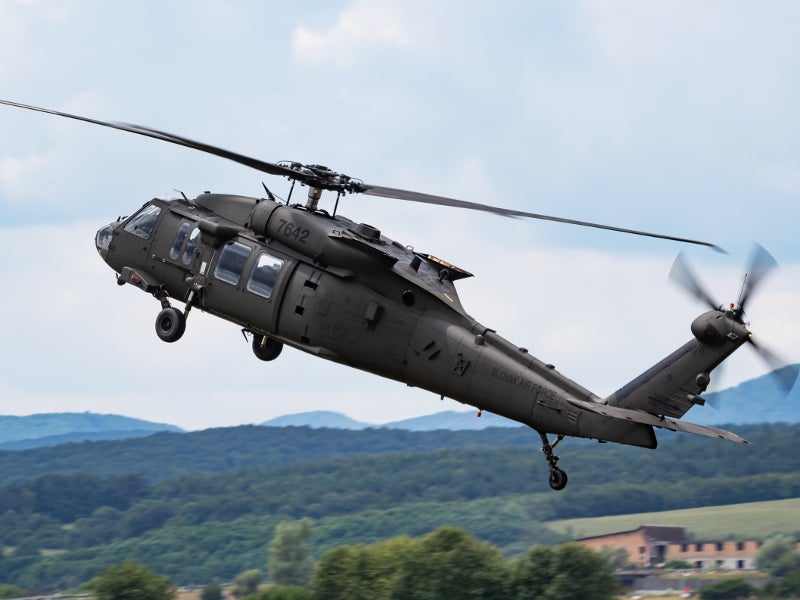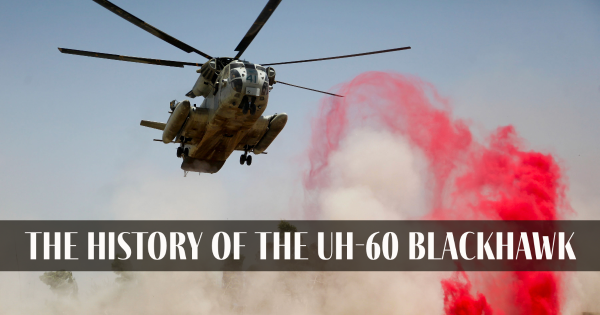Opening Peak Performance: UH 60 Helicopter Upkeep Guide
Wiki Article
Navigating Uh 60 Helicopter Regulations and Conformity Needs

Regulatory Framework Overview
The governing structure controling UH-60 helicopter procedures encompasses a facility collection of requirements and policies established by aviation authorities. These regulations are made to guarantee the secure and reliable procedure of UH-60 helicopters in numerous settings. The Federal Aeronautics Administration (FAA) plays a central duty in developing and implementing these guidelines, which cover a variety of functional elements, consisting of airworthiness criteria, pilot certifications, upkeep demands, and operational treatments.Compliance with these regulations is important for helicopter drivers to preserve the highest degrees of security and operational stability. Failure to stick to these policies can result in significant repercussions, consisting of mishaps, injuries, and regulatory permissions. Consequently, helicopter operators have to stay educated regarding the most up to date governing developments and make certain that their operations remain in full compliance with all applicable policies and standards.
Airworthiness Regulations and Inspections
Amidst the regulative structure controling UH-60 helicopter procedures, a vital emphasis exists on conformity with Airworthiness Directives and performing extensive assessments to maintain safety and security criteria and functional reliability. Airworthiness Directives (ADs) are provided by aeronautics authorities to resolve unsafe conditions in aircraft, including the UH-60 helicopter, and mandate particular actions to be taken by owners or drivers. Compliance with ADs is obligatory, and failure to follow these instructions can cause significant effects, consisting of grounding of the aircraft.
Regular evaluations are critical to guaranteeing the airworthiness of UH-60 helicopters. These evaluations encompass an array of checks, from regular everyday evaluations conducted by pilots prior to and after flights to much more comprehensive set up upkeep evaluations accomplished by certified technicians. Furthermore, special examinations might be required based upon certain conditions or events. By sticking to a stringent inspection routine, operators can spot and resolve prospective concerns without delay, thus improving the safety and security and integrity of UH-60 helicopter procedures.
Pilot Credentials and Training

Pilot training for UH-60 helicopters is comprehensive and covers a variety of topics, consisting of aircraft systems, emergency situation procedures, navigating, and mission-specific training. Additionally, pilots undertake simulator training to practice numerous emergency circumstances in a controlled setting. This training helps pilots create the required abilities to deal with tough circumstances properly.


Additionally, ongoing training and professional development are important for UH-60 pilots to stay existing with the most up to date laws, modern technology, and ideal methods. By purchasing pilot qualifications and training, drivers can boost security, enhance performance, and ensure conformity with governing demands in the operation of UH-60 helicopters.
Operational Limitations and Needs
Pilot certifications and training function as the foundation for recognizing the functional restrictions and requirements related to UH-60 helicopter operations (uh 60). These operational constraints are implemented to ensure the safety why not try this out and security of the crew, guests, and the airplane itself. Operational limitations might include variables such as climate condition, weight constraints, elevation constraints, and functional boundaries. It is crucial for pilots to be skilled in these limitations to make enlightened decisions throughout flight procedures. Furthermore, conformity demands, such as sticking to certain trip courses, interaction protocols, and emergency situation treatments, are necessary for maintaining functional security and governing compliance. Pilots have to stay present with all functional restrictions and needs through routine training, instructions, and evaluates to minimize risks and make sure secure and efficient UH-60 helicopter operations. By prioritizing adherence to these functional standards, pilots can enhance the general safety and security and effectiveness of their objectives while maintaining governing standards.Emergency Procedures and Compliance Testing
Effective emergency treatments and thorough compliance screening are essential parts of keeping functional security and regulative adherence in UH-60 helicopter operations. Emergency treatments incorporate methods for different situations, including engine failings, fires, hydraulic concerns, and a lot more. Pilots and team members must be fluent in these treatments to react swiftly and effectively in emergency situations. Routine compliance testing makes certain that the helicopter satisfies all regulative requirements stated by aeronautics authorities. This testing involves detailed examinations, checks, and examinations to confirm that the airplane is airworthy and in conformity with all appropriate regulations.Additionally, compliance screening might entail simulations of emergency situations to examine the staff's response and the helicopter's performance under stress and anxiety. By prioritizing emergency situation treatments and conformity testing, UH-60 operators can reduce dangers and show their dedication to safety and security and regulatory compliance.
Conclusion
Finally, adherence to regulative framework, conformity with airworthiness regulations, pilot credentials and training, functional constraints, and emergency treatments are important for navigating the guidelines and demands of running a UH-60 helicopter. uh 60. It is vital for drivers to focus on security and make sure full compliance with all appropriate policies to maintain the airworthiness and operational integrity of the airplaneBrowsing the governing landscape bordering UH-60 helicopter operations demands a nuanced understanding of the intricate web of guidelines and conformity needs.Compliance with these guidelines is necessary for helicopter operators to keep the highest possible levels of safety and functional stability.In the middle of the regulative structure governing UH-60 helicopter procedures, an important focus exists on conformity with Airworthiness Directives and conducting comprehensive examinations to maintain security criteria and operational reliability.Effective emergency situation treatments and comprehensive compliance screening are critical components of description preserving operational safety and governing adherence in UH-60 helicopter procedures. Normal compliance testing makes have a peek here certain that the helicopter satisfies all regulative requirements established forth by air travel authorities.
Report this wiki page